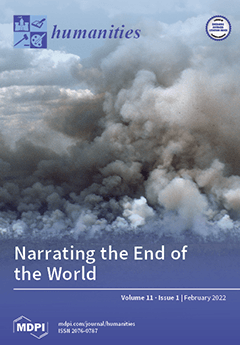Open AccessArticle
Performance as Intersectional Resistance: Power, Polyphony and Processes of Abolition
by
Omid Tofighian, Rachael Swain, Dalisa Pigram, Bhenji Ra, Chandler Connell, Emmanuel James Brown, Feras Shaheen, Issa El Assaad, Luke Currie-Richardson, Miranda Wheen, Czack (Ses) Bero and Zachary Lopez
Cited by 4 | Viewed by 3582
Abstract
Australia’s brutal carceral-border regime is a colonial system of intertwining systems of oppression that combine the prison-industrial complex and the border-industrial complex. It is a violent and multidimensional regime that includes an expanding prison industry and onshore and offshore immigration detention centres; locations
[...] Read more.
Australia’s brutal carceral-border regime is a colonial system of intertwining systems of oppression that combine the prison-industrial complex and the border-industrial complex. It is a violent and multidimensional regime that includes an expanding prison industry and onshore and offshore immigration detention centres; locations of cruelty, and violent sites for staging contemporary politics and coloniality. This article shares insights into the making of a radical intersectional dance theatre work titled
Jurrungu Ngan-ga by Marrugeku, Australia’s leading Indigenous and intercultural dance theatre company. The production, created between 2019–2021, brings together collaborations through and across Indigenous Australian, Kurdish, Iranian, Palestinian, Filipino, Filipinx, and Anglo settler performance, activism and knowledge production. The artistic, political and intellectual dimensions of the show reinforce each other to interrogate Australia’s brutal carceral regime and the concept of the border itself. The article is presented in a polyphonic structure of expanded interviews with the cast and descriptions of the resulting live performance. It identifies radical ways that intersectional and trans-disciplinary performances can, as an ‘act of liberation’, be applied to make visible, embody, address, and help dismantle systems of oppression, control and subjugation.
Full article
►▼
Show Figures





